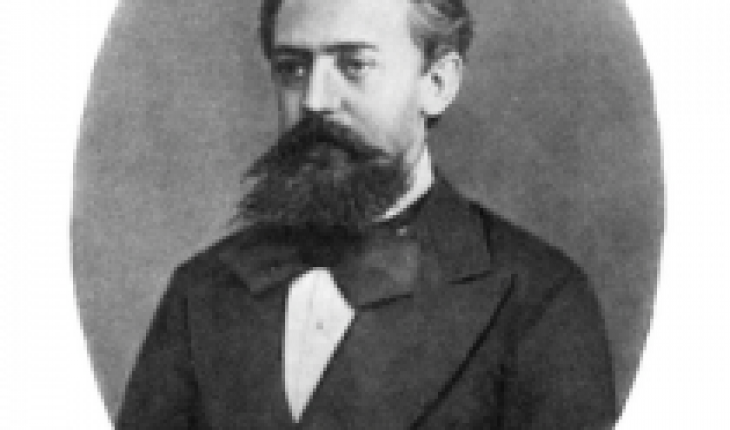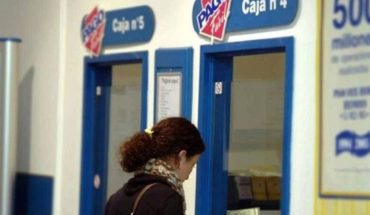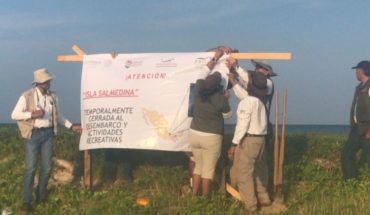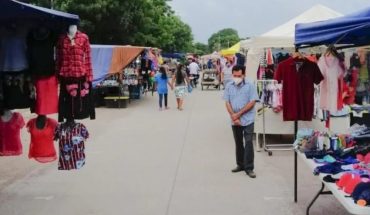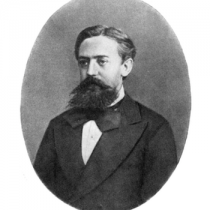
The Weather section occupies a prominent part in the news of all networks. This section, apart from informing us of the weather of the day, has helped us to understand concepts such as the probability of rain or the impossibility of knowing on a Monday if Sunday we will be able to go to the beach.
In the case of epidemics, another phenomenon very difficult to explain, the uncertainty of when the peak will arrive (or arrived) and how many people will enter the hospital next week invites to use a variety of mathematical models called Markov chains.
In our goal of bringing to society the mathematical instruments that help us to face the current pandemic, we echo the figure of an exceptional mathematician, Andrei Andréyevich Marrkkov, the inventor of the chains that bear his name.
Studies and early probability
Markov was born in Ryazan, Russia, on June 14, 1856. His father, the son of a rural deacon, studied at a seminary, later obtaining a job in the Forestry Department in St. Petersburg. Andrei was the eldest of two sons in a large family. His younger brother, Vladimir, who died prematurely of tuberculosis, had gained a great reputation as a good mathematician in a short life.
The firstborn was a child with delicate health who wore crutches until he was ten years old but, already in high school, he excelled in Mathematics, attracting the attention of his teachers.
Portrait of Andrei Markov. Wikimedia Commons
It was obvious that Markov was going to study this subject and he did so at the prestigious Faculty of Physics and Mathematics at the University of St. Petersburg. There he received a strong influence from the brilliant mathematician Pafnuty Lvovich Chebyshev (Okátovo 1821 – St. Petersburg 1894).
Markov graduated in 1878 and began his master’s work on number theory (rational approximation), a thesis that was highly praised and considered one of the best treatises on the subject at the time. This allowed him to pursue his career as a professor at the university and obtain a doctorate in 1884. Two years later, he became deputy of the St. Petersburg Academy of Sciences on Chebyshev’s proposal, although he continued to maintain his ties to the university.
It was in 1900 that Markov became interested in probability theory, a subject in which he obtained very brilliant results, including the discovery of the strings that bear his name.
Chebyshev, Kolmogorov and Markov are the big names that used elements of measurement theory to turn probability theory into one of the most rigorous and respected areas of mathematics.
Markov did not work with the possible practical applications of the chains he discovered in mind. In fact, the only area where he used them was in literature, counting vowels and consonants, perhaps because of his great love of poetry. However, as we will show below, the applications of The Markov chains are of great practical use.
The Markov Chains
Intuitively, a Kharkiv chain in discrete time (by simplicity) is a stochastic process that evolves in discrete time or stages and has Markovian property that says: “the future depends on what happens in the present, but not on the strict past”.
So, we’ll have some states E, E2, E,… so that you pass through one to the other through a transition matrix at a stage. The cardinality (number of elements) of the set of states is numberable, that is, it is a finite set or with the same cardinality as natural numbers.
The transition matrix at each stage has as elements the chances of passing from one state to another when the process evolves from one stage n to the next stage n+1. Therefore, it is composed of positive actual numbers between 0 and 1, so that the sum of each row or column, depending on the arrangement of the initial (in stage n) and end states (in stage n+1), is 1.
Application in medicine
The following is a very simple example. In an intensive care unit, patients are classified (triage) according to their state: critical, serious and stable. Each day the ratings are updated according to the historical evolution of the patients admitted to the unit up to that point, so that the relative frequencies of changes in status of a patient are:
In the previous layout, entries per row are associated with the patient’s status on day n and the columns refer to their status on day n+1. So, we could take it as a transition matrix in one stage:
Rows add up to 1. One representedn graph as the following can help us better understand the dynamics of change between a patient’s states on two consecutive days:
Author provided
With a chart like this we can calculate probabilities in more than one stage. For example, the probability of moving from critical state C to stable E in two days. There are three possible paths, depending on the patient’s C, S and E status after the first day:
C –> C –> E
C –> S –> E
C –> E –> E
We just have to multiply the probabilities and add up the way:
0.6 x 0.1 + 0.3 x 0.2 + 0.1 x 0.5 x 0.17
That is, a patient admitted to critical condition C will evolve to stable state E in two days 17% of the time. Obviously, these probabilities may change as new treatments appear, or different states of the chain could be defined according to the patient’s age, etc. All these generalizations would enrich the Markov chain, but the general idea would remain the same.
Political and social commitment
Markov was a politically engaged person at an early 20th century time of Russia’s hectic transition. For example, when Maksim Gorky was withdrawn from his appointment as an academic at the Academy of Sciences for political reasons, he protested vigorously.
In 1913, the mathematician refused to support the celebration of the third centenary of Tsarism to celebrate, on his own, the second anniversary of the Law of Great Numbers.
When the Russian Revolution of 1917 triumphed, Markov asked to be sent to a small inland town, Zaraisk, to teach at the local school for free and thus contribute to the improvement of poor rural society.
Tomb of A. Markov in St. Petersburg. A.Savin/Wikimedia Commons, CC BY-SA
Suffering from serious health problems, this brilliant Russian mathematician died in St. Petersburg on July 20, 1922. He died at the age of 66 due to widespread infection caused by one of several knee surgery to which he underwent.
A version of this article was originally published on the Mathematics and Its Borders blog, of the Foundation for Knowledge madrid+d.
Manuel de León Rodríguez, Research Professor at CSIC, Royal Academy of Sciences, Institute of Mathematical Sciences (ICMAT-CSIC); Antonio Gómez Corral, Professor of the Department of Statistics and Operational Research, Complutense University of Madrid and Mario Castro Ponce, Professor and Researcher at the Higher Technical School of Engineering (ICAI), Universidad Pontificia Comillas
This article was originally published in The Conversation. Read the original.

